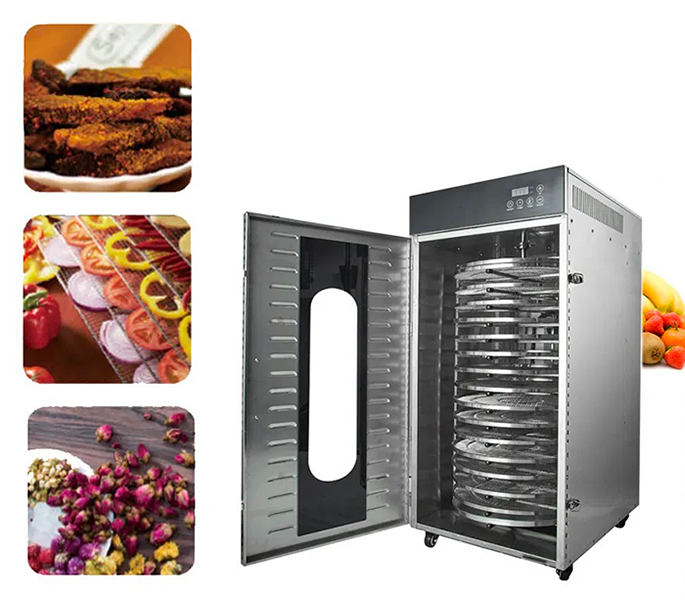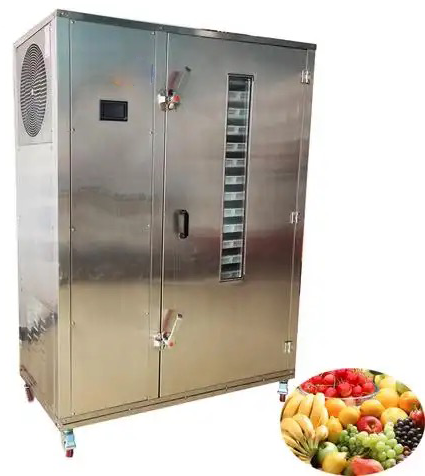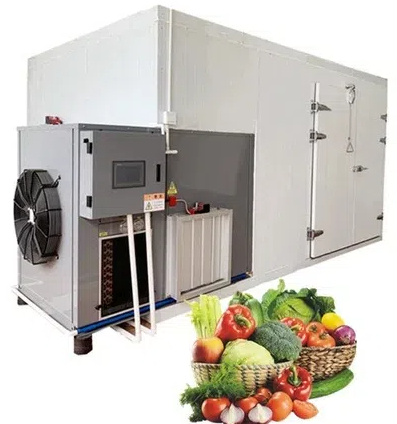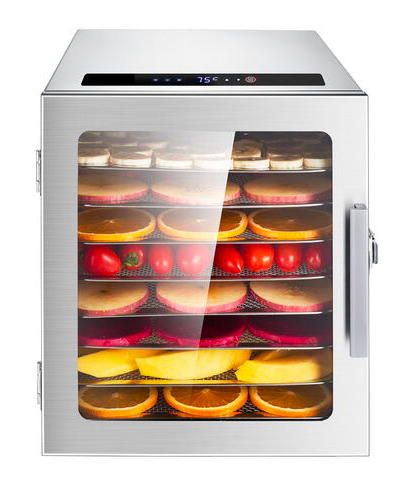
Content Menu
● Introduction to Food Drying Technology
● Understanding Food Drying Machines
>> Benefits of Using Food Drying Machines
● The Technology Behind Heat Pump Dryers
>> How Heat Pump Technology Works
>> Advantages of Heat Pump Technology
● Comparing Traditional Drying Methods with Heat Pump Technology
>> Applications of Food Drying Machines
>> Innovations in Food Drying Technology
● Choosing the Right Food Drying Machine
>> Cost Considerations
● Conclusion
● Frequently Asked Questions
>> 1. What is a heat pump dryer?
>> 2. How does a heat pump dryer work?
>> 3. What types of foods can be dried using these machines?
>> 4. Are heat pump dryers environmentally friendly?
>> 5. How do I maintain my food drying machine?
Introduction to Food Drying Technology
Food drying is a crucial preservation method that has been used for centuries. The process removes moisture from food, inhibiting the growth of bacteria, yeasts, and molds, which can cause spoilage. As technology advances, food drying methods have evolved significantly, leading to the development of modern food drying machines. In this article, we will explore the various aspects of food drying machines, focusing on their benefits, types, and the technology behind them. We will also discuss how these machines compare to traditional methods and highlight the importance of choosing the right equipment for your needs.

Understanding Food Drying Machines
Food drying machines are designed to remove moisture from food products efficiently. They come in various forms, including:
- Convection Dryers: These use hot air to circulate around the food, promoting even drying.
- Dehydrators: These machines often utilize lower temperatures and longer drying times to preserve nutrients.
- Heat Pump Dryers: This technology is gaining popularity due to its energy efficiency and ability to maintain lower drying temperatures.
Benefits of Using Food Drying Machines
Using a food drying machine offers numerous advantages over traditional drying methods:
- Energy Efficiency: Modern machines, especially heat pump dryers, consume less energy compared to conventional electric dryers.
- Nutrient Preservation: Controlled drying processes help retain vitamins and minerals in food.
- Consistency: Machines provide uniform drying results, reducing the risk of spoilage.
- Convenience: Automated settings allow users to dry food without constant monitoring.
- Versatility: Many machines can handle a variety of foods, making them suitable for different applications.
The Technology Behind Heat Pump Dryers
Heat pump dryers operate on a unique principle that sets them apart from traditional electric dryers. They use a refrigeration cycle to extract moisture from food while recycling heat within the system. This method not only reduces energy consumption but also allows for gentle drying at lower temperatures.
How Heat Pump Technology Works
1. Evaporation: Moisture from the food evaporates into the air within the dryer.
2. Condensation: The evaporated moisture is then condensed back into liquid form and collected.
3. Heat Recovery: The heat generated during condensation is reused to warm incoming air, enhancing energy efficiency.
This cycle continues until the desired moisture content is reached in the food product.
Advantages of Heat Pump Technology
- Lower Temperatures: Heat pump dryers operate at lower temperatures compared to traditional methods, which helps in preserving sensitive nutrients in fruits and vegetables that might otherwise be lost at higher temperatures.
- Energy Savings: By reusing heat within the system, heat pump dryers can reduce energy costs significantly over time. This makes them an economically viable option for both small businesses and large-scale operations.
- Reduced Environmental Impact: With their lower energy consumption, heat pump dryers contribute less to greenhouse gas emissions compared to conventional dryers.
Comparing Traditional Drying Methods with Heat Pump Technology
Traditional drying methods often involve high temperatures and prolonged exposure to air. This can lead to nutrient loss and uneven drying. In contrast, heat pump dryers offer:
| Feature | Traditional Dryers | Heat Pump Dryers |
|-----------------------------|-------------------------------|--------------------------------|
| Operating Temperature | High | Low |
| Energy Consumption | Higher | Lower |
| Nutrient Preservation | Moderate | High |
| Drying Time | Longer | Shorter |
| Environmental Impact | Higher | Lower |
Applications of Food Drying Machines
Food drying machines can be used for a wide range of products:
- Fruits: Apples, bananas, and berries can be dried for snacks or ingredients in recipes.
- Vegetables: Carrots, tomatoes, and peppers retain flavor and nutrients when dried properly.
- Herbs and Spices: Drying herbs helps preserve their potency for culinary uses.
- Meat Products: Jerky production benefits from controlled drying processes that enhance flavor while ensuring safety.

Innovations in Food Drying Technology
The field of food drying technology is continually evolving. Recent innovations include:
- Smart Drying Systems: Many modern dryers come equipped with smart technology that allows users to monitor and control the drying process remotely via smartphone apps. This feature provides convenience and flexibility in managing multiple batches of food.
- Advanced Sensors: Newer models are equipped with sensors that detect moisture levels in real-time, adjusting temperature and airflow accordingly to ensure optimal drying conditions without over-drying or under-drying products.
- Hybrid Systems: Some manufacturers are developing hybrid systems that combine heat pump technology with other methods (like convection or microwave) for even more efficient drying processes tailored to specific types of foods.
Choosing the Right Food Drying Machine
When selecting a food drying machine for your business or personal use, consider the following factors:
- Capacity: Choose a machine that meets your production needs without compromising quality. Larger capacities are ideal for commercial operations but may be unnecessary for home use.
- Energy Efficiency Ratings: Look for models with high energy efficiency ratings to save on operating costs. Energy Star-rated appliances often provide significant savings over time.
- Ease of Use: Automated features can simplify the drying process and reduce labor costs. Look for user-friendly controls that allow you to set timers and temperatures easily.
- Maintenance Requirements: Opt for machines that are easy to clean and maintain for long-term reliability. Regular maintenance will extend the life of your dryer and ensure consistent performance.
Cost Considerations
Investing in a food drying machine involves considering both initial costs and long-term savings:
- Initial Investment: Higher-end models may come with a steeper price tag but often offer better efficiency and features that justify the cost over time.
- Operating Costs: Calculate potential energy savings against your local electricity rates. Heat pump dryers typically offer lower operating costs due to their energy-efficient design.
Conclusion
Food drying technology has come a long way from traditional methods. With advancements like heat pump dryers, businesses can achieve efficient, consistent results while preserving the nutritional value of their products. Whether you are a small-scale producer or a large manufacturer, investing in a quality food drying machine will enhance your operations and improve product quality.
As we continue to innovate in food preservation techniques, understanding these technologies becomes essential for anyone involved in food production or processing. By choosing the right equipment tailored to specific needs and leveraging modern advancements in technology, producers can ensure they meet consumer demands while maintaining sustainability practices.

Frequently Asked Questions
1. What is a heat pump dryer?
A heat pump dryer is an energy-efficient appliance that uses refrigeration technology to remove moisture from food at lower temperatures compared to traditional dryers.
2. How does a heat pump dryer work?
It operates by evaporating moisture from food into the air inside the dryer, condensing it back into liquid form, and recycling heat within the system to enhance efficiency.
3. What types of foods can be dried using these machines?
You can dry various foods such as fruits, vegetables, herbs, spices, and meat products like jerky using heat pump dryers.
4. Are heat pump dryers environmentally friendly?
Yes, they consume less energy than traditional electric dryers, leading to a lower carbon footprint and reduced operational costs.
5. How do I maintain my food drying machine?
Regular cleaning of filters and surfaces, checking seals for wear and tear, and following manufacturer guidelines will help ensure optimal performance and longevity of your dryer.












